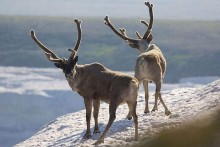National parks of the USA
This article is about five most interesting national parks of the United States - one of the largest in its territory countries of the world, spreading over many different climatic zones.
1. Congaree
State: South Carolina
Location: 90 minutes drive from Charlotte Douglas Airport
Area: 107 square km
Founded: 2003
Our ancestors and fishermen appreciated this place for a long time, but the status of Congaree national park was received only 11 years ago. Its marshy waterways, fringed by the sun-closing trees, are a real refuge for wild animals. Wild pigs and armadillos roam around here, but the realm of birds is truly thriving. Listen to the bizarre cacophony of bird voices, taking a walk or swimming by canoe and approaching the floodplain forest, one of the largest in the United States. Canoeing, as a rule, is free on weekends. Do not miss the opportunity to admire pine trees up to 51 meters high, and also designated by wildlife - otters, white-tailed deer and raccoons living along the banks of the Cedar Creek River.
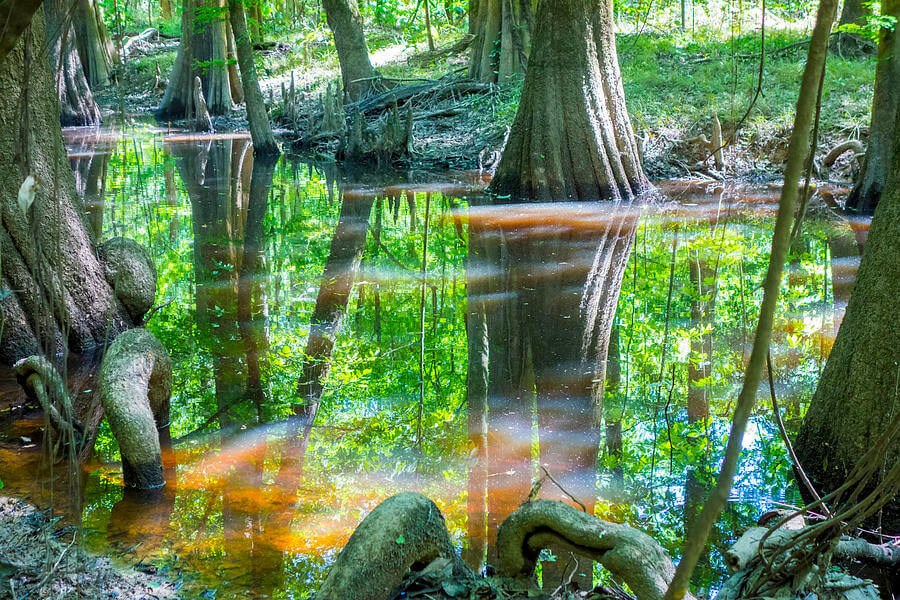
When to visit: all year round. However, it is better to avoid the rainy summer months, as some routs can be washed out by rain.
2. Glacier
State: Montana
48 km from the international airport of Glacier
Area: 4101 sq. km
Founded: 1910
Forecast of the scientists about the Glaser national park is not happy. Experts believe that by 2030 the glaciers that gave the name to the park will melt. So do not delay the trip until later, otherwise it will be too late. The park is included in the World Network of Biosphere Reserves in 1976, the glacier is surrounded by dense forests, wild meadows, azure lakes and ice peaks. Hollywood appreciated this place: more than 35 films were shot here, including "The Shining" based on Stephen King's novel, which has already become a classic.
Glacier contains more than 1100 km of hiking routs, numerous camping sites, provides great opportunities for boating and biking. You do not need to get out of your car (although certainly you should): The 80-kilometer Going to the Sun road, the only road in the park, crosses 2,026 km of the continental break in Logan Pass and offers stunning views to tourists. In the winter, on skis or snowshoes, you can reach most of the Glacier area in all its icy splendor.
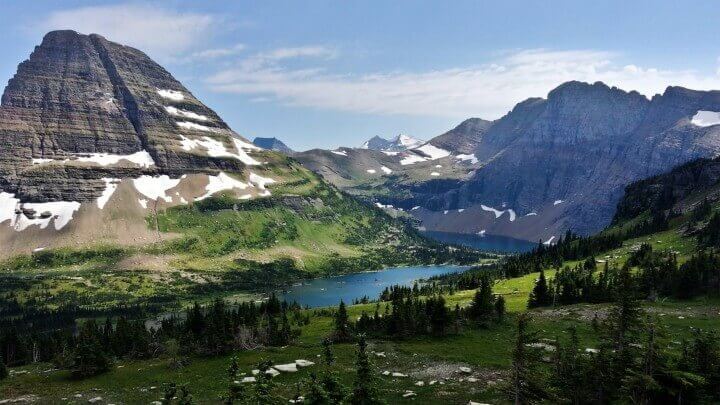
When to visit: all year round. In autumn it is more beautiful and quieter than in the peak summer months, and winter offers a variety of winter sports.
3. Carlsbad Caverns
State: New Mexico
Area: 189 square km
Founded: 1930
Carlsbad Caverns is an islet of dampness, hidden deep in a dry desert. The reserve consists of 119 prehistoric caves belonging to the glacial period, when sulfuric acid penetrated through limestone, creating bizarre stalactites, stalagmites and rocks of incredible shapes. Here, ideal conditions were created for thousands of cave crickets and 17 species of bats. Visit caves at dusk, and you will see (and feel) how flocks of bats fly out of dark hiding places to search for prey.
Three caves are open to the public. Canyon Slaughter and Cave Spider are relatively poorly developed. Visitors can hike along the raw and dirty cave trails or take the elevator, and the most curious ones can get to the transparent pools and cave pearls. And for those who want to experience the whole horror of cave darkness, there are special tours with no trails and lighting.
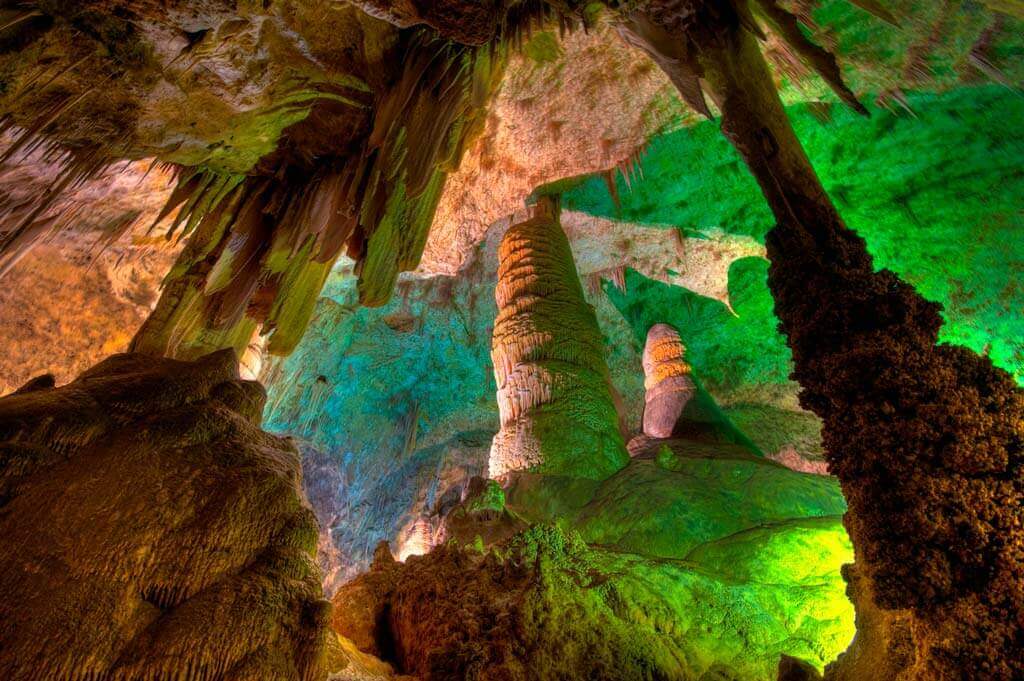
When to visit: all year round. Desert field flowers bloom from March to April and from October to November. The best time to observe bats is July and August.
4. The Kobuk Valley
State: Alaska
Area: 7085 sq. km
Founded: 1980
There are no souvenir shops, campsites, roads and routes. Kobuk Valley, located very close to the Arctic Circle, is a wild place. Here you need to come up with some experience to find your adventure. This place is not for beginners.
It's hard to get here: the plane is often the only way to get to villages like Kobuk, Shungnak and Ambler - good starting points for self-traveling along the river. The easiest way to get an idea of the terrain is to make a one-day flight. Maybe you will even see a herd of caribou deer numbering more than 500 thousand, which migrate through the territory of the national park (in the spring - to the north, in the autumn - to the south). Smaller planes can land right on the 50-meter-long Great Sand Dunes Kobuk, a good place for hiking and camping.
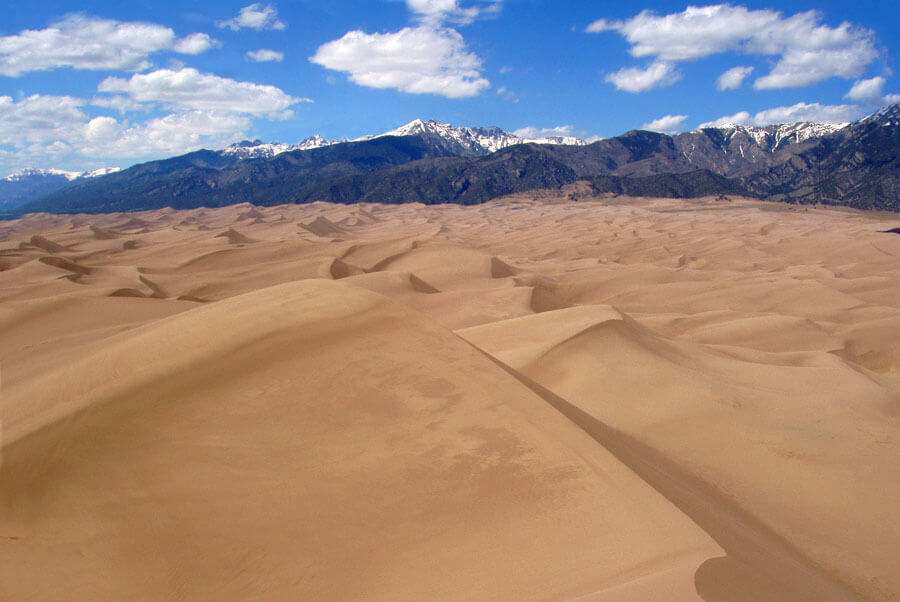
When to visit: all year round. From mid-August to mid-October, as a rule, a clear sky, bright autumn colors and fewer mosquitoes than in the warm summer months. July - the beginning of September - the best time for sailing along the river Kobuk.
5. Biscayne
State: Florida
Area: 700 square km
Founded: 1980
About 95% of the Biscayne national park area is under water, so opportunities for walking and cycling are limited. To appreciate this mass of mangroves, coral reefs and more than 500 species of fish, it is best to go on a boat trip. Unfortunately, at the moment there are not many opportunities for swimming. There are several options for trips on the ship, including a trip on a boat with a transparent bottom and diving, as well as not so demanded canoes and kayak rentals. Even from the land, you can appreciate the vast mangrove forests (the longest on the east coast) and the shallow waters of the Biscayne Bay.
When the carriage on the river will resume to the full, do not miss the opportunity to go on a tour of Maritime Heritage Trail, offering tourists to explore the remains of six shipwrecks.

When to visit: all year round. Organized canoe trips - from January to April, this is also the best time for camping, since then there are fewer insects than in other months.

